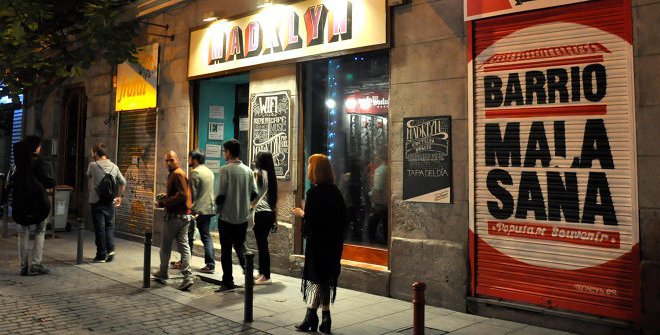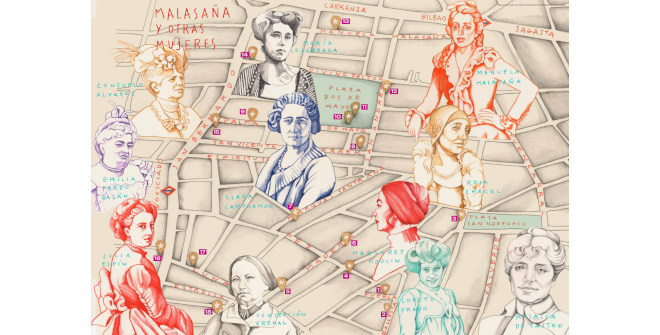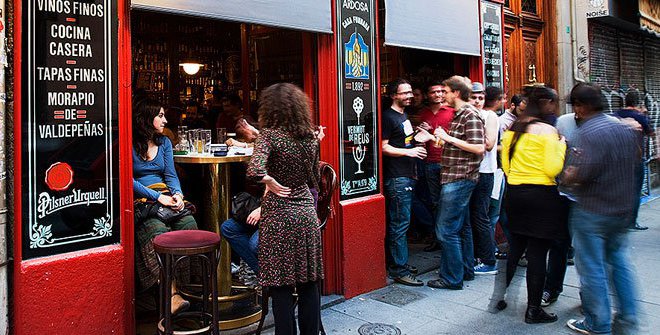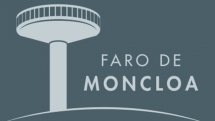Malasaña
A district brimming with bohemian and hipster urbanites. The mecca of vintage looks and underground culture in Madrid
 01_1407241731.202.jpg
01_1407241731.202.jpg 04_1407241743.695.jpg
04_1407241743.695.jpg 05_1407241747.344.jpg
05_1407241747.344.jpg 06_1407241751.038.jpg
06_1407241751.038.jpg 07_1407241755.14.jpg
07_1407241755.14.jpg 08_1407241759.241.jpg
08_1407241759.241.jpg 09_1407241762.663.jpg
09_1407241762.663.jpg

- Info and history
- Art and culture
- Shopping
- Food and drink
- Leisure and nightlife
The district Malasaña resembles a square, bordered by Gran Vía on the south, Calle Fuencarral on the east, Calle Carranza on the north and Calle de San Bernardo on the west.
It owes its name to Manuela Malasaña, one of the heroines and victims of the historical events that took place in Madrid on 2 May 1808. Plaza del Dos de Mayo, at the heart of the neighbourhood, commemorates the rebellion against Napoleon’s occupation led by captains Luis Daoíz and Pedro Velarde, officers at the headquarters of the Monteleón Artillery Regiment. The square, which has kept an arch of the old military premises, pays tribute to the two brave captains with a monument.
In the festive 1980s, Malasaña witnessed the birth of the movida madrileña, an underground movement that revolutionised the arts, culture and Spanish society at large.
The district includes Triball, a shortened version of ‘Ballesta Triangle’, an area named after Calle de la Ballesta where new establishments that embrace sustainable business practices are to be found. Triball seems to have been born again lately, with the opening of spaces dedicated to culture, fashion and gastronomy.
The History Museum is housed in the Real Hospicio del Ave María y Santo Rey Don Fernando. The building, designed by architect Pedro de Ribera, can be considered one of the finest examples of eighteenth-century Baroque architecture in Madrid. The museum has interesting collections that show the city’s historical and urban development, plus the arts, customs and traditions of Madrileños.
Church of San Antonio de los Alemanes
The construction of this place of worship, designed by several architects, Pedro Sánchez, Francisco Seseña and Juan Gómez de Mora among them, started in 1624. Its elliptical floor plan and its fully frescoed walls make this church unique. Great artists like Francisco Ricci, Francisco Carreño de Miranda and Luca Giordano took part in the decoration of the building.
Opposite the History Museum on Calle Fuencarral stands the seat of the body that is responsible for auditing the accounts of the Spanish government and its agencies.
Royal Academy of Exact Physical and Natural Sciences of Spain
It is a public academy dedicated to the study and research of mathematics, physics, chemistry, biology, engineering and related sciences within the Instituto de España (Institute of Spain). Its library contains more than 27,000 volumes and diverse materials like scientific periodicals, manuscripts and maps.
It is considered a beautiful example of Madrid Baroque style of the second half of 17th century. Father José de Valdemore is believed to have built it around 1648 with a cruciform, longitudinal Latin-cross groundplan. Even though the church’s impressive façade is attributed to José de Churriguera no actual evidence confirms it.
This art school, an official centre for artistic education under the Madrid Regional Ministry of Education dating back 150 years, is located in the heart of Malasaña and is unique because of its facilities and for the educational opportunities it offers in the specialities of Sculptural Techniques and Mural Techniques, as well as in Arts applied to clothing.
Fancy a little retail therapy? Malasaña is a great shopping district, with thousands of things to buy.
Most stores can be found on Calle Fuencarral, bordering with Chueca, on the easternmost tip of the district. This mostly pedestrian street is lined with youth fashion and sportswear brand stores, tattoo artist studios, as well as retailers dedicated to alternative and vintage fashion.
In this neighbourhood there are numerous shops dedicated to sustainable fashion and specialising in second hand and vintage clothing such as Kinda Kinks, Triolet Vintage Shop, Magpie Vintage and Biba Vintage.
Located in a spacious two-storey building in Malasaña, El Moderno - Concept Store is an eclectic store that stocks a wide variety of articles, ranging from decoration objects to furniture, works of art, jewellery, stationery, children's books, toys, gifts or souvenirs, among others, all of which are made by artisans.
In the narrow and pretty streets around Dos de Mayo square, you shouldn’t miss small shops dedicated to vintage fashion, both new and used, or the comic stores like Generación X and Elektra Cómic.
Over the past decade, stores devoted to culture, fashion and catering have sprung up between Ballesta, Valverde, Desengaño, Corredera Baja de San Pablo, Barco and Plaza Soledad Torres Acosta streets, bringing a run-down area back to life. One of them is Templo de Susu, one of the best-known vintage and second-hand clothing shops in the neighbourhood and the city.
In Malasaña there are dining options for every taste and palate. Traditional old taverns are the ideal place to have tapas and a refreshing beer. Bodega de la Ardosa is a really famous bar and, since it opened in 1892, it has been offering vermouth and beer on tap, to go with the typical tapas like oreja frita (fried pig’s ears), tortilla de patatas (Spanish potato omelet) or canned seafood. Other places to visit are Casa Fidel, Casa Julio (their croquettes impressed even Bono Vox and his band), Casa Camacho or La Camocha.
On the other hand, new bars include Circo de las Tapas, La Pescadería, Bar Galleta, Navajas or San Ildefonso Market. Also the Ojalá restaurant where you can eat at any time of the day or enjoy its cocktails and smoothies. And La Colmada, the perfect place to enjoy an aperitif in Malasaña, half bar-half shop. A gastrospace that pays tribute to old-fashioned grocery stores with an extensive wine list and a menu of conserves and preserves.
At one of the countless outdoor bars and cafés in the neighbourhood, you can savour drinks and tapas al fresco. Most of the spots you should visit border the squares of Dos de Mayo, San Ildefonso (a.k.a. Plaza del Grial) and María Soledad Torres Acosta (Plaza de la Luna). Grab one of the coveted outdoor tables and enjoy traditional Spanish specialties or dishes with an unexpected twist, organic meals, vegetarian or vegan recipes… You choose.
Another good option is to visit Mastropiero Pizzeria at San Vicente Ferrer, 36, a pizzeria and Argentinian restaurant that is the perfect place for pizza lovers thanks to its wide range of varieties. Another great place to eat is the Lebanese street food restaurant Makan, or the Asian buffet Wonderland Restaurant.
For a quieter, relaxing afternoon, there’s no better place than one of the many finely decorated coffee houses in Malasaña. Get a seat and take out your book, or have a nice time chatting with a friend over a cup of tea or coffee.
Also, more traditional cafes like Café de la Luz, Café La Palma, Café Ajenjo, Café Moderno, Café Manuela and Café de Ruiz live alongside newly opened ones as Levadura Madre, Lolina Vintage Café or the cafe-bookstore Tipos Infames and Bastardo Hostel.
In Calle del Espíritu Santo, there is a restaurant and cocktail bar that houses Sakro, a restaurant with one of the best Italian pizzas in the city.
Malasaña has retained the soul (a tad kitsch) of the 1980s underground movement known as ‘movida madrileña’. Proof of this is that, despite having extended its activities to daytime and no longer being for the night owls only, the district still shines at its brightest when the sun goes down. The clubs cater for music lovers from every quarter, be it rock, punk or indie pop that they’re after. All of them are quite small; there are no mega nightclubs in the area.
The true focus of Malasaña’s nightlife is Plaza del Dos de Mayo. In the adjoining streets stand countless pubs, some of which – Penta, La Vía Láctea or Lucky Dragon. for instance – have been alive and kicking since the ‘roaring 80s’.
And for those with most stamina, some of the bars in this area stay open until late and the night can stretch out to the sounds of different kinds of music from rock, electronic music to pop. Some of them include Club Malasaña, Sala But, El perro de la parte de atrás del coche, Madrid Me Mata, Teatro Maravillas Meléndez and Tupperware. You can find them around Valverde, Barco and San Vicente Ferrer Streets.
If you just want to go out for a drink, we recommend the cocktail bars like Josealfredo Bar, 1862 Dry Bar or Macera Taller Bar.
And if what you are looking for is of a more cultural nature, you will be sure to find something interesting in the listings at the following theatres: Lara, Maravillas, Victoria or Alfil (it has special Teatro Flamenco Madrid performances). And Microteatro por dinero is also a venue worth considering if you're a fan of off-the-cuff or alternative genres.
-
Map of Tourist Areas (PDF)
-
Nightlife: Malasaña
DOWNLOAD IT NOW
-
Malasaña and Other Women
-
Centuries-old Establishments
OFFICIAL PRODUCTS
- Contact
- General Conditions
- Legal Terms and Conditions
- Cookies policy
- Privacy settings
- madrid.es













